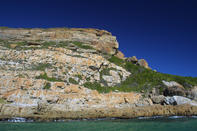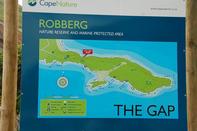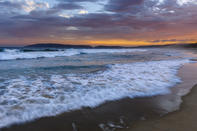Geological Site
In the 15th century, Robberg was discovered by the Portuguese and first named ‘Cabo talhado’ (meaning Sharp Cape). Around the 17th century, it was renamed to Robberg (seal mountain) by the Dutch due to the large population of seals in the region.

The Robberg Peninsula has a unique rock formation and some of the oldest and youngest rocks in the world are found in the area. The Robberg formation consists of 3 rock layers. The bottom layer is around 250 million years old and consists of Table Mountain quartzite. The middle layer is river stone conglomerate, indicating that the peninsula was once a river bed. The top layer dates back 45 000 years and is made up of sandstone.
The caves along Robberg are interesting archaeological sites, and there are signs of human occupation dating back 19 000 years. There are around 20 caves and the Nelson Bay Cave shows signs of the Stone Age Man. Throughout history, the ocean was 100 km down from the current high water mark, so inhabitants of the cave had a varied diet that changed from seafood to land mammals.
The first recorded excavation of the caves was in 1880. Various skeletons have been around the caves, and one of the most famous ones was one of a young girl who died around 200 years B.C.
Nature Reserve
Robberg became a nature reserve in 1980, and was declared a national monument in 1999. The peninsula has been a Protected Marine Area since 2000, which protects 12.9 km of coastline and 1.8 km out into the ocean. It is an important conservation area due to its birdlife and fish.
Two attractions in the Robberg Peninsula is the Cape Seal Lighthouse and Athena shipwreck. The lighthouse is the highest navigational lighthouse along South Africa’s coastline and was first constructed in 1950, but rebuilt in 2014, but 10 m higher to give it a wider light range.
The Athena ship was a Greek fishing trawler that ran ashore and sank in 1967 after it hit whale rock (located at the point of Robberg). The ship sank with 200 tons of tuna and fortunately, the crew could swim to safety. The wreck is a popular fishing location as it acts as an artificial reef.

